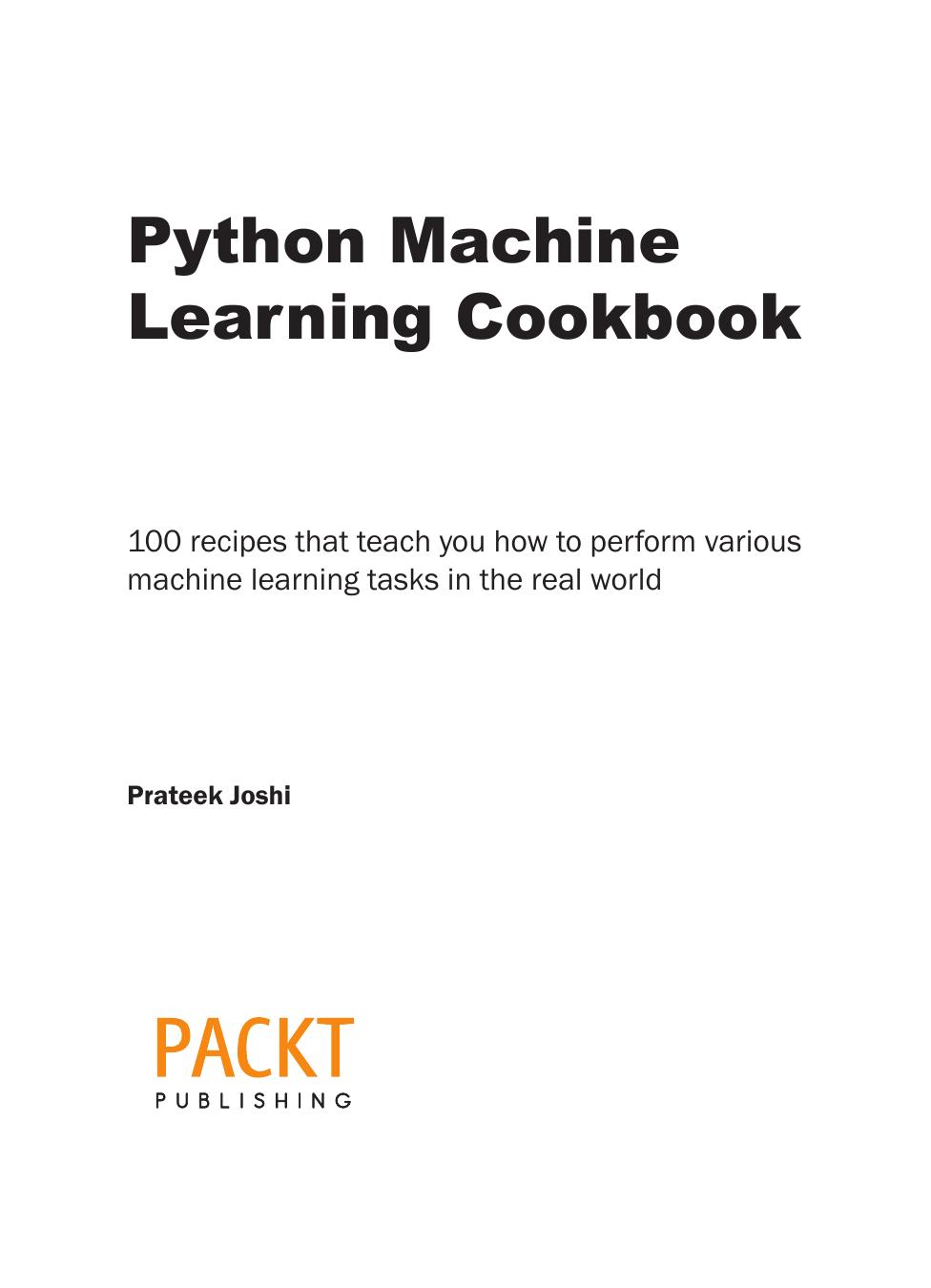Python Machine Learning Cookbook by Prateek Joshi

Author:Prateek Joshi [Joshi, Prateek]
Language: eng
Format: azw3, pdf
Publisher: Packt Publishing
Published: 2016-06-23T04:00:00+00:00
If you want to split these punctuations into separate tokens, then we need to use WordPunct Tokenizer:# Create a new WordPunct tokenizer from nltk.tokenize import WordPunctTokenizer word_punct_tokenizer = WordPunctTokenizer() print "\nWord punct tokenizer:" print word_punct_tokenizer.tokenize(text)
The full code is in the tokenizer.py file. If you run this code, you will see the following output on your Terminal:
Stemming text data
When we deal with a text document, we encounter different forms of a word. Consider the word "play". This word can appear in various forms, such as "play", "plays", "player", "playing", and so on. These are basically families of words with similar meanings. During text analysis, it's useful to extract the base form of these words. This will help us in extracting some statistics to analyze the overall text. The goal of stemming is to reduce these different forms into a common base form. This uses a heuristic process to cut off the ends of words to extract the base form. Let's see how to do this in Python.
Download
Python Machine Learning Cookbook by Prateek Joshi.pdf
This site does not store any files on its server. We only index and link to content provided by other sites. Please contact the content providers to delete copyright contents if any and email us, we'll remove relevant links or contents immediately.
The Mikado Method by Ola Ellnestam Daniel Brolund(20433)
Hello! Python by Anthony Briggs(19751)
Secrets of the JavaScript Ninja by John Resig Bear Bibeault(18034)
The Well-Grounded Java Developer by Benjamin J. Evans Martijn Verburg(17425)
OCA Java SE 8 Programmer I Certification Guide by Mala Gupta(17296)
Kotlin in Action by Dmitry Jemerov(17001)
Algorithms of the Intelligent Web by Haralambos Marmanis;Dmitry Babenko(16098)
Grails in Action by Glen Smith Peter Ledbrook(15257)
Sass and Compass in Action by Wynn Netherland Nathan Weizenbaum Chris Eppstein Brandon Mathis(13187)
Test-Driven iOS Development with Swift 4 by Dominik Hauser(10347)
Windows APT Warfare by Sheng-Hao Ma(7832)
Layered Design for Ruby on Rails Applications by Vladimir Dementyev(7545)
Blueprints Visual Scripting for Unreal Engine 5 - Third Edition by Marcos Romero & Brenden Sewell(7447)
Solidity Programming Essentials by Ritesh Modi(4560)
Functional Programming in JavaScript by Mantyla Dan(4428)
Hands-On Full-Stack Web Development with GraphQL and React by Sebastian Grebe(4425)
WordPress Plugin Development Cookbook by Yannick Lefebvre(4378)
Unity 3D Game Development by Anthony Davis & Travis Baptiste & Russell Craig & Ryan Stunkel(4266)
The Ultimate iOS Interview Playbook by Avi Tsadok(4249)
